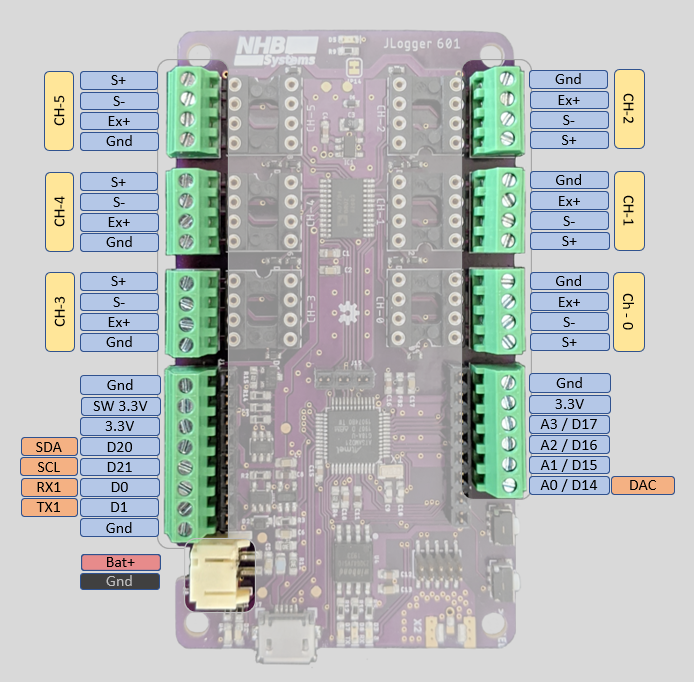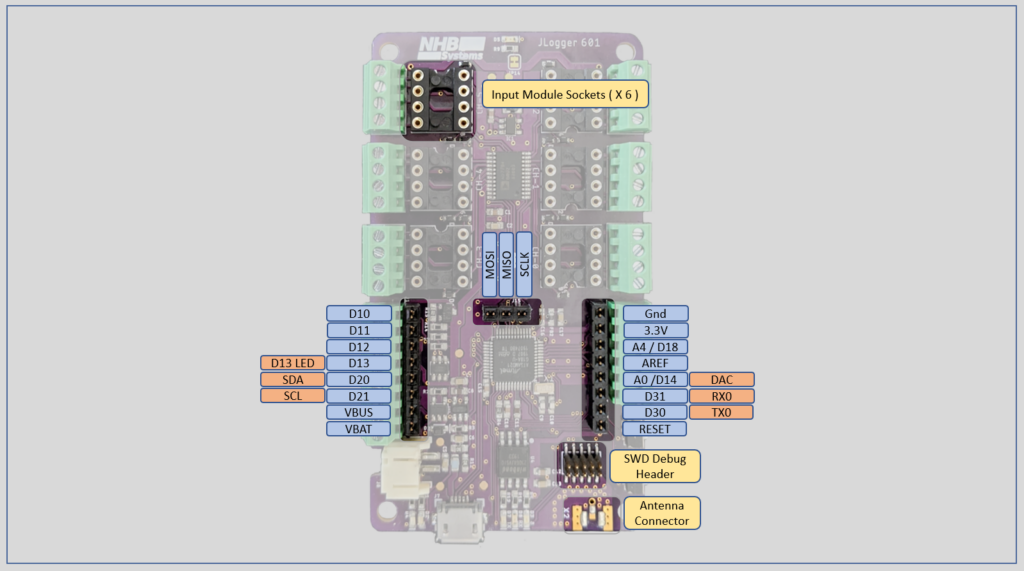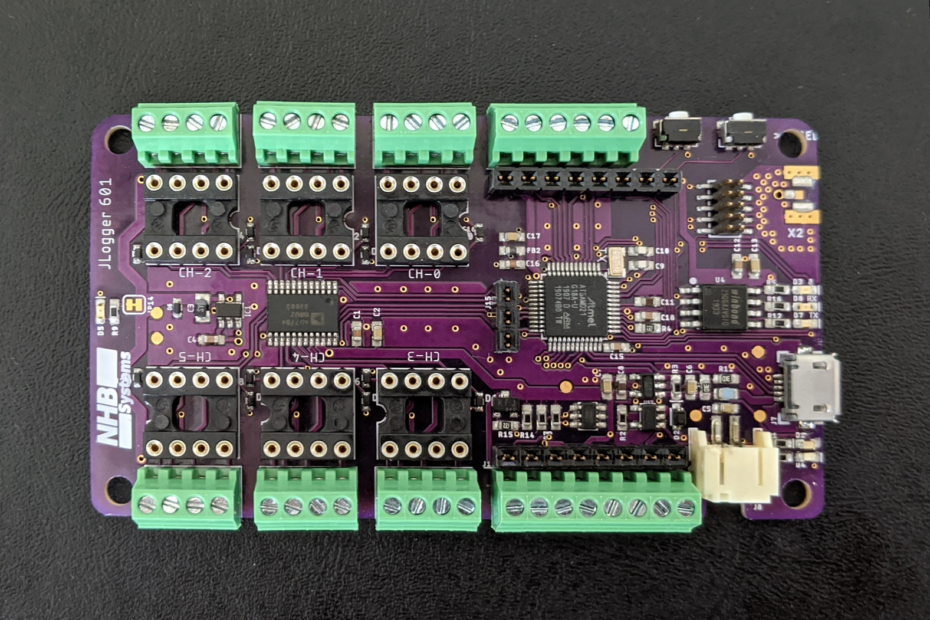I really wanted a go-to device for remotely monitoring a variety of sensors. I often need to monitor and log data from precision analog sensors like strain gauges, load cells, potentiometers, and thermocouples; as well as digital sensors over I2C and serial. I also usually have to do this in some pretty remote places where power may not be available, or is unreliable. There is some really nice professional equipment out there, but it quickly becomes cost-prohibitive for smaller jobs. Of course you can always put something together with an MCU and a bunch of breakout boards, but I wanted something a little more grab-and-go. (while still being hackable when needed).
The JLogger-601 is designed to be that device. (Actually, I intend for it to be the first in a series of devices targeting different needs related to civil infrastructure monitoring and research). The board is designed for ultra low power, long term remote monitoring using LoRaWan (or raw packet radio) for long range communication. It utilizes the ubiquitous SAMD21G18 microcontroller because it’s low power, well supported, and stable. Of course it is also Arduino compatible and can be used with the Arduino IDE by installing the board support package and required libraries.
Basic Specifications
- 6 differential 24-bit analog inputs with programmable gain amplifier (1 to 128)
- Sockets for custom input modules on each precision analog input channel
- MOSFET controlled 3.3V output to shut down power to external digital sensors
- 2.5V Excitation voltage can be enabled/disabled in code to save power with analog sensors
- 14 μA sleep current
- 4 high speed 12-bit analog inputs (3.3V)
- 1 x 12-bit analog output (3.3V) (shared pin with AIN0)
- Expansion headers
- Onboard LiPo charger (with trace-jumper to disable charging to allow for non-LiPo batteries)
- Onboard EUI-64 MAC IC
- SAMD21 microcontroller (Arduino Zero/M0 compatible)
- Optional RFM95 LoRa radio transceiver (RFM69 packet radio also supported)
- 8MB onboard SPI flash IC
External connections include 6 precision analog input groups in addition to standard IO and communication terminals and the usual 2 mm JST battery connector.

There are also internal expansion headers for digital IO and a 10 pin SWD debug header along with sockets for analog input modules that can be used for additional signal conditioning like bridge completion, bias resistors, or filtering.

If you are wondering about the name, “JLogger” is a reference to what a colleague used to call my assorted customized hardware and the “601” represents “6 channel device number 1”. The idea being that I may create a 6 channel board with different capabilities in the future, and I also intend to design a version with a different number of analog channels.
There will be much more to come with this board including more detailed specs, hookup guides, and examples. In the meantime the JLogger is available now over at Tindie.

